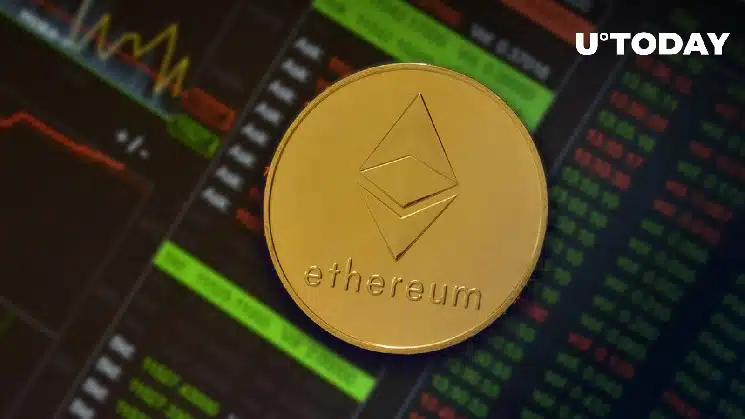Ethereum, the second-largest digital currency by market capitalization, has experienced a suppressed price growth recently, in tandem with the general market outlook. Over the past 24 hours, its price dropped by 3.01% to $1,846.85. However, it is worth noting that the current bearish slump is sutured by the marginal 0.62% gain over the past week.
Crypto market analyst @Ali_Charts pointed to the state of the Ethereum network at this time with reference to Glassnode’s data. The data shows how the protocol has increased active users, transaction volume, and blockspace demand, all indications of a healthy Ethereum network adoption.
While this is notably a bullish tick for the Ethereum protocol, the price action at this time is not showing the true impact of these impressive network fundamentals. @Ali_Charts explained that this may be due to a rejection in the total number of average active users in the network, which suggests weaker network fundamentals and reduced utilization. With reduced utilization, the total number of users demanding Ethereum is also correlatively reduced, showcasing as slowing price gains.
Ethereum and Hope for Dominance
The price of Ethereum is just one metric to show the dominance of the blockchain protocol. For what it’s worth, the blockchain network and its ecosystem remain the most important in the industry today.
The emergence and continuous evolution of Layer 2 (L2) protocols is a testament to the growing commitment to building the inherent utility surrounding the blockchain. While not directly a beneficiary of technological advancements in Polygon zkEVM, Optimism, and Arbitrum, among others, Ethereum is definitely an indirect beneficiary.
The growth and impressive performance of these L2s broadens the attractiveness of the underlying blockchain protocol, which, in turn, is a major win for the entire blockchain and Web 3.0 ecosystems.
However, for Ethereum to maintain its dominance in the swiftly evolving blockchain space, it needs to overcome challenges such as network congestion and high gas fees, which makes it less attractive for users and developers. The planned transition to Ethereum 2.0, also known as ETH2, aims to address these issues by shifting from the current Proof of Work (PoW) consensus algorithm to a more scalable and energy-efficient Proof of Stake (PoS) algorithm.
Ethereum 2.0 is expected to bring significant improvements in terms of scalability, security, and sustainability, thus ensuring that the Ethereum network continues to be the leading blockchain platform for decentralized applications (dApps) and smart contracts.
In conclusion, while the recent price suppression of Ethereum (ETH) may be a matter of concern for investors, it is essential to look beyond the short-term price action and assess the long-term potential of the network. The growing adoption of Ethereum, the continuous improvements in its underlying technology, and its critical role as a platform for dApps and smart contracts suggest that the future looks promising for the Ethereum ecosystem.
The Ethereum blockchain’s long-term outlook appears bright, given the tremendous growth and development observed in its network over the past few years. As new protocols and layers continue to emerge and develop, it is increasingly evident that Ethereum is cemented in the blockchain and Web 3.0 ecosystems as a dominant and indispensable player.
However, it is crucial for Ethereum stakeholders, developers, and enthusiasts to continually innovate and improve the network to ensure its viability and competitiveness in the rapidly advancing blockchain industry. As Ethereum gears up for its anticipated transition to Ethereum 2.0, it will be critical to keep up with the demands and expectations of the global blockchain community and ensure that Ethereum remains the undisputed industry leader.
In short, although Ethereum may be facing temporary hurdles in terms of price appreciation, the long-term potential and opportunities offered by the blockchain platform remain immense. By focusing on the fundamental strengths of the network, such as increasing adoption, continuous innovation, and the added advantages of emerging L2 solutions, Ethereum is well-positioned to thrive and maintain its market dominance in the rapidly-evolving blockchain space.
As the world becomes increasingly interconnected, digital, and reliant on decentralized solutions and systems, Ethereum stands as the premier platform for facilitating the development and deployment of next-generation technologies that will drive the future of the internet and digital economy. Ethereum’s long-term success will depend on its ability to adapt and remain at the forefront of technological advancements while maintaining high levels of security, reliability, and usability for the diverse ecosystems that depend on its blockchain infrastructure.


